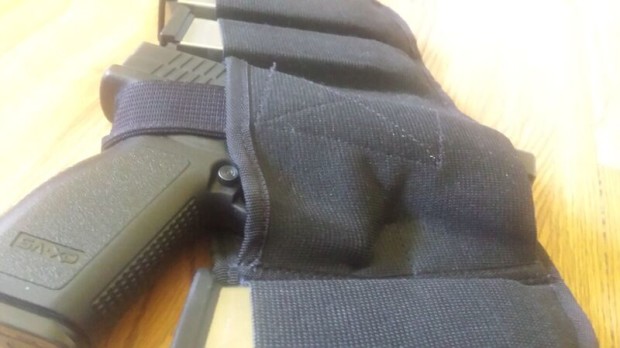


While skinnier individuals will want to avoid holster contact on bony areas, bigger guys are going to want to avoid pinching skin. Follow the Natural Contours of Your BodyĪs with most styles of carrying, exact specifications will depend on your body type. Take factors such as the size of your hands and ride height into consideration. Start by adjusting the holster or finding a holster that sits perfectly. Giving yourself enough space between the edges of your gun and pants to get a solid grip is critically important, especially when you need to draw your weapon quickly. When it comes to a concealed carry of any kind, you should always be able to easily get a proper grip on your firearm. Leave Enough Room For a Strong, Easy Grip While you won’t want to go overboard on this tip, try to find pants that fit well and can be worn around your hip bone, or slightly above. Keeping your pants, and therefore your firearm, higher when sitting while driving for example, allows the holster to bend with you and helps to prevent injury caused by your own weapon. To prevent that discomfort, we recommend wearing your pants higher up on your waist. We understand this concern you want to retain a comfortable, free range of motion with your concealed carry. One frequently cited drawback of the appendix carry is the way it allows your weapon to jab into you when you sit or bend. Tips for Your Best Appendix Carry Adjust the Height of Your Pants

For example, if you happen to fall backwards during the day, you won’t fall painfully onto your weapon if you’re using an appendix carrying technique.

Other benefits include the ease of concealment for just about any size handgun, better protection for gun retention, and increased comfort. Many gun owners cite the natural feeling and quickness of unholstering their firearm from an appendix carry position. Perhaps the most common advantage is how easy appendix carrying makes drawing your weapon. While the best carry position for you will depend on your style of shooting, preferences, goals, and other factors, appendix carrying offers some serious advantages that are worth considering. Today, appendix carrying is a little more sophisticated than that of the 19 th century, with specialized holsters, belts, and techniques making it a much safer, comfortable method of carrying. Generally, this position is used with an “In the Waistband” (IWB) holster to aid in concealment. Typical placement of the firearm in this style of carry is often about halfway between the pants pocket and the waistband button. The term “appendix carry” is a newer term for this same carrying style, referring to the way your holster rests against your abdomen, around the general location of your appendix. In the 19 th century, small revolvers called “belly guns” were often worn tucked into the front of the waistband, rather than at the side or back.


 0 kommentar(er)
0 kommentar(er)
